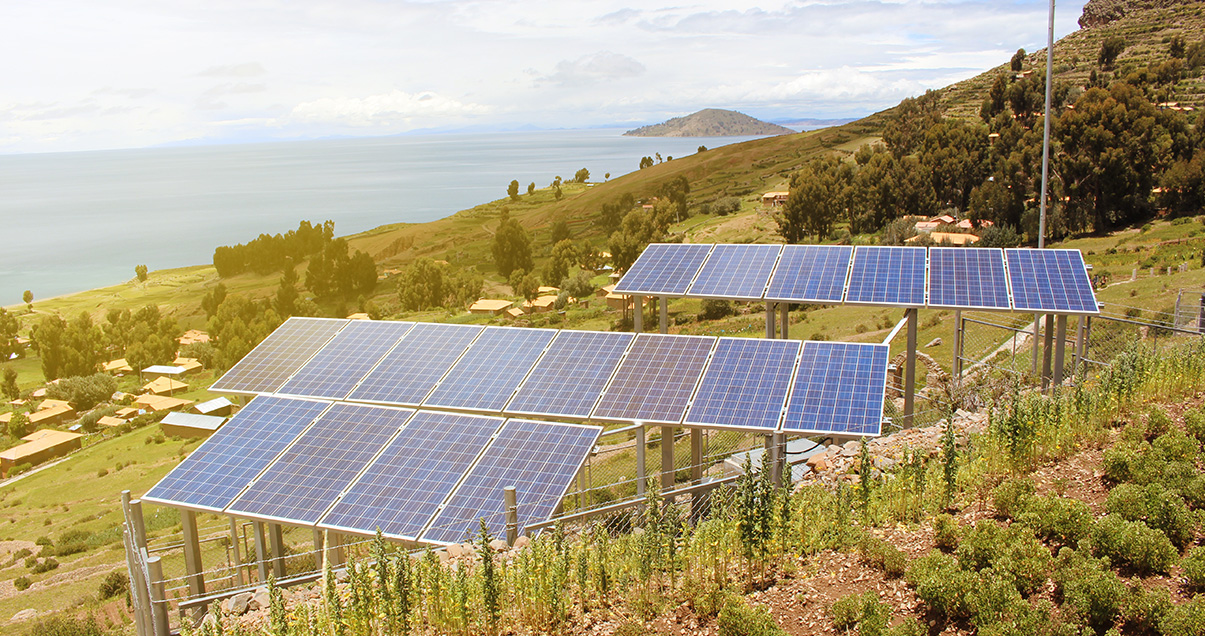Virtual Power Plants

Imagine a balmy summer evening in a not too distant future, and you’re having a refreshing lemon sorbet for dessert. But what – you ask yourself – is keeping the freezer running if 100 percent of our electricity comes from renewable energies and the PV system goes to sleep at sundown? The answer is a virtual power plant.
Virtual power plants are an essential element of the energy transition. Although the term came about in the 1990s, the concept didn’t start to take off until some ten years later. In 2007, the Fraunhofer Institute for Wind Energy and Energy System Technology (IWES) proved that a fully regenerative electricity supply would be possible in principle by interlinking various energy sources and turning them on and off as needed.
The second part of the research project focused on grid stability, as a reliable electricity supply requires the grid to function 24 hours a day up and down the country. What grid stability means in essence is that as much power is fed into the grid as is taken out at any given time. If frequency fluctuations are too great, the utility grid is brought to its knees.
When now, instead of a few hundred coal-fired, gas-fired and nuclear power plants, there are tens of thousands of wind turbines and PV modules involved, things start to get complicated. That’s because they generate different amounts of electricity up and down the country depending on the weather, the season and the time of day.
Control center for a stable grid
Here’s where virtual power plants come in. They link up and coordinate a number of decentralized electricity production systems via a digital infrastructure of communication, control and management programs. On the electricity market, they function as a stationary power plant acting on behalf of its group of power generators.
Virtual power plants are exceptionally adaptable in terms of their power plant capacity. When demand is low, individual systems are turned off and the rotors in a wind farm, for example, are set to increase draught. Depending on the particular business model, industrial consumers or battery-storage systems are used, which turn on automatically at peak production times for the PV farms belonging to the group, for example.
The company sells the electricity that is generated by its (currently commercial only) customers to the electricity exchange for the best price – or to transmission grid operators as balancing energy. If there is an unexpected increase in electricity demand or an excess of power, positive or negative balancing energy is required for a short time to balance out the amounts of electricity in the grid.
This is where a well-organized virtual power plant really comes into its own. Thanks to its diverse portfolio, it is able to satisfy the various demands of transmission grid operators at lightning speed by turning its electricity sources and consumers on or off immediately by remote control.
Virtual power plants are an ideal solution for some system protection services as well. Maintaining the voltage and frequency across nearly two million kilometers of power lines that stretch to every corner of the country is no mere trifle – and if the fluctuations are too great this may trigger a power outage. To restore the electricity supply in this instance, the situation requires power plants that function without external energy sources. They help those power plants that need electricity for the startup get back up and running again. At the moment, gas-fired and hydroelectric power plants are mainly used for this purpose. In the future, it could well be stand-alone grids based at virtual power plants.

Intermediaries in the electricity sector jungle
Nowadays, the topic of grid stability also concerns decentralized producers of “green” electricity, with logic dictating that the higher their share in the electricity mix, the more responsibility they should share. This job isn’t going to get any easier either with ever more market operators and advancing electrification. Specific legislation has therefore been introduced – such as the direct selling requirement. The minimum amount of electricity generated for this legislation to apply is gradually going down, and it will ultimately also come to affect private generators when they no longer have a guaranteed entitlement to grid feed-in. In the interests of grid stability, system operators are not allowed to feed in their surplus electricity unchecked, neither are they permitted to give it away.
This will be music to the ears of small-scale PV system operators, who may be thinking “How do I register right now to be part of the next virtual power plant?” But this is no trivial matter, as cooperating systems have to have the ability to be controlled and accessed remotely. The technology this requires is not a bargain. A second cost factor to take into account are the basic amounts paid to direct sellers, which for those with very small systems are in no way commensurate with the income earned per kilowatt hour fed into the grid. Until now, equipping the system with a smart measurement and communication system and integrating on an organizational level with a virtual power plant has only really been a worthwhile investment for commercial generators and consumers.
Efforts are being made at a number of levels to change this situation, with solar associations, for example, pushing for new legal requirements. Simplifications to the registration process for very small producers or changes to the composition of electricity prices would make peer-to-peer concepts like the one offered by enyway or integration into a micro grid appealing for people like Average Joe as well.
Solutions need to be found because currently affected small-scale systems with a maximum output of less than seven kilowatt hours as a whole are equally indispensable for the energy transition.
A handful of electric utility companies have already introduced or will soon be introducing specific incentives, for example, where they subsidize the cost of the technical equipment and sell the green electricity to their existing customers. In other words, they supply the virtual power plant themselves. Then, hopefully, the rest will follow the lead of their competitors and we will be able to enjoy our lemon sorbet some day in the future as well.

